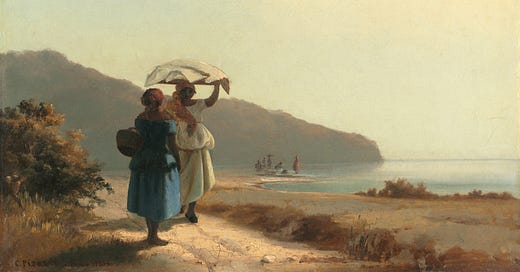Review of Julius Scott's "The Common Wind." (2018)
Julius S. Scott, The Common Wind: Afro-American Currents in the Age of the Haitian Revolution (New York: Verso, 2018), pgs. 246.
See here.

Long influential as an unpublished dissertation, The Common Wind (2018) was first written in 1986 while Julius Scott was a graduate student at Duke University in Durham, North Carolina. Over three decades later, Scott (1955-2021), then a professor of History at the University of Michigan, published his dissertation with Verso Books. One of the most cited dissertations in the United States in the twentieth century, Scott has welded monumental influence on a generation of scholars. Though outdated, some of the basic ideas foundational to his book still hold significant weight and deserve consideration.
Utilizing a Marxian approach for his historical analysis, Scott argues that in the eighteenth century a network or “common wind” of revolutionary thought spread throughout the Black Atlantic world through the means of the “masterless class” or those who were at the bottom rung of society including sailors, slaves, and others. This masterless class shared rumors, ideas, and news with each other across the broader Atlantic world. This common class radicalized with the advent of the French and Haitian Revolutions and Scott argues that the Black revolts throughout the Atlantic world were inspired by rumors and the radical ideas of freedom and equality coming out of the American and French Revolutions. In Scott’s telling, this oppressed class was in constant conflict with masters and government officials, who recognized that the masterless classes' mobility allowed for revolutionary ideas to spread and get out of hand. Comprised of a preface, five chapters, and an epilogue, The Common Wind weaves together a narrative of rumor, revolution, and radicalism that was far too often ignored by historians.
Scott shows throughout The Common Wind that slaveholders and European officials were fearful of Black communication networks spreading ideas about the various revolutions occurring in the Atlantic world. Scott’s arguments are strongest when showing the role that the Haitian Revolution had in spreading rebellion and liberty across the Atlantic world. That being said, there are some issues that ought to have been addressed. Scott largely frames the narrative as Black people as the oppressed versus a hegemonic white class of planters, officials and their supporters. However, in places such as Louisiana and San Domingue, the reality was that revolution was never so simple. These multi-racial societies had numerous cross sections that do not map easily onto a simple Marxian oppressor versus oppressed. For example, Black planters in San Domingue were as equally violent in suppressing slave revolts as their white counterparts. Or in Louisiana not all Black people engaged in rebellion and actually aided their masters against the revolutionaries in the German Coast uprising. While Scott does an excellent job of illustrating the role of African American networks, he does not consider that many of those revolting in San Domingue were more recent arrivals from the Kongo region of Africa. These and several other issues revolving around over extending the argument can be found throughout.
Overall, the idea of a common wind is useful in understanding the complicated, and often unvoiced segment of Caribbean society who were at the bottom rung of the social ladder. Scott attempts to give them voice and provides a useful framework in which to think about how transatlantic communities were far more interconnected than nationalist histories ever noted. The Caribbean, and by extension the Atlantic ocean, were highways for information, revolution, and change as individuals traversed the official imperial boundaries and made connections that defied imperial visions of conformity. A short read, this book is important for any discussion of the Black Atlantic or Atlantic world in general.
Robert Swanson



